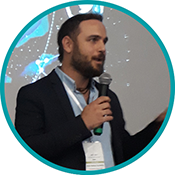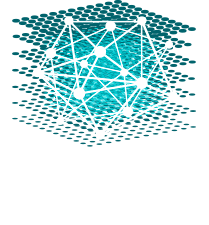TUTORIALS

Jesús GÓMEZ-GARDEÑES
University of Zaragoza, Spain
In this tutorial we will deal with a topic that has advanced enormously in the recent decades thanks to contribution of network science: the modeling of epidemics. We will begin by reviewing the building blocks of the broad field of theoretical epidemiology: the compartmental models. From this point, we will progressively add ingredients aimed at capturing the real patterns of connectivity (networks) and mobility (metapopulations) observed in real societies. Finally, after analyzing the behavior of these models from the theoretical point of view, we will address the current challenges of epidemics prediction and the design of containment strategies.
Network Epidemiology: From simple to data-driven models
Jesus Gomez-Gardeñes is Associate Professor and head of the Group of Theoretical and Applied Modeling (GOTHAM) at the Institute of Biocomputation and Physics of Complex Systems (BIFI) of the University of Zaragoza (Spain). His main fields of research are statistical physics, nonlinear dynamics and the theory of complex networks. Within these disciplines he has mainly focused in the study of the emergence of collective phenomena out of nonlinearity and the structure of interactions in complex systems. Along these lines he has studied some paradigmatic problems such as energy localization, synchronization, random walks, traffic congestion, disease propagation and evolutionary dynamics. He has authored more than 100 scientific articles in international journals, including Nature Physics, PNAS, Physical Review Letters, Physics Reports, Science Advances, Nature Human Behavior among others. In the recent years he has focused on the study of multilayer networks and network epidemiology.

Silvio LATTANZI
Google Zurich, Switzerland
Detecting the clustering structure of real-world networks has emerged as an important primitive in a wide range of data analysis tasks such as community detection, event detection, spam detection, computational biology, link prediction and many others. As a result, the study of the topology of real world networks and of their clustering (or community) structure is central in modern network analysis. In particular, in recent years, several models have been introduced to capture the community structure of social networks and numerous empirical studies analyzed the community structures at a macroscopic and microscopic levels. One of the main observations in this line of work is the lack of a clear macroscopic community structure in real world networks. In sharp contrast with these findings, it has been observed that while the community detection problem is hard at a macroscopic level, it becomes simple at a microscopic level. This is is especially true when we restrict our attention to local structures know as ego-nets (a.k.a. ego-networks) which consist of the subgraph induced over the neighborhood of a single node in the graph. Intuitively, this happens because, even if a node is part of many communities, if we restrict our attention to a node and one of her neighbors, there is only one or a limited number of communities in which the two nodes interact, which present a clearer structure at the level of the neighborhood. In this talk we will first present this phenomena then we will discuss how to analyze ego-networks at scale and finally describe few applications of ego-network analysis.
From micro to macro: ego-network analysis and its applications
He is a Research Scientist at Google Research Europe since April 2017. Before he was in the NY Algorithm group at Google New York from January 2011 to March 2017. He received my PhD from Sapienza University of Rome under the supervision of Alessandro Panconesi. During my PhD he interned twice at Google and once at Yahoo! Research.
My research interests are in the areas of algorithms, machine learning and information retrieval.


